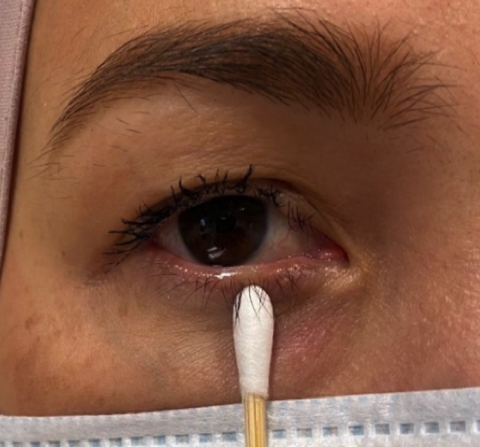Menu
Site by Constant Creations
Dry Eye Syndrome
Dry eye syndrome is a common issue and can be responsible for a range of complaints that cause discomfort in the eye. One in 10 adults in Australia experience dry eye to varying degrees of severity (RANZCO). Dry eye can be a nuisance but in some people chronic dry eye can be debilitating.
What is Dry Eye Syndrome?
Symptoms and Causes
Symptoms of dry eye can include
• Irritation
• General dryness
• Grittiness, scratchiness
• Burning
• Watery eyes
• Blurred vision
• Light sensitivity
Surprisingly, watery eyes can be a sign of dry eye due to excess production of tears to compensate for an unhealthy tear film. You may notice dry eye is worsened by triggers such as air conditioning, contact lens use, smoke and reduced blinking which can occur with excess computer work. Age, autoimmune conditions, previous eye surgeries and some medications may also contribute to dry eye syndrome.
Layers of the Eye
Tear Film Layers
Normally our tear film protects the surface of the eye and is composed of multiple layers:
Layer 1 - Oily layer
This layer is composed of oils secreted from tiny oil glands called the meibomian glands. This layer traps water in the tear film by preventing evaporation and creates a smooth protective surface.
Layer 2 - Watery layer
This layer is composed of watery tears that are produced by the lacrimal gland. This layer keeps the eye moist, keeps the surface healthy and also washes out dust and debris.
Layer 3 - Mucus layer
This layer is composed of mucus that ensure tears spread over the entire surface evenly between blinks.
Meibomiam Gland Dysfunction
Your meibomian glands are found in inner eyelids and rims near the lash line. Your doctor will examine these glands during a dry eye assessment and check for signs of inflamed lids (blepharitis) and meibomian gland dysfunction which are usually closely connected. Some of the signs of blepharitis include crusty or greasy water line, redness and swelling. Chronic blepharitis can lead the meibomian glands to become blocked or unhealthy. This prevents the release of the important oily layer which protects our tear film.
Problems with the meibomian or lacrimal glands can therefore disrupt the tear film layers and lead to the classic symptoms of dry eye.
"Depiction of a person suffering from Dry Eye Syndrome"
by https://www.myupchar.com/en is licensed under CC BY-SA 4.0.

Dry Eye Management
Artificial Tears: Lubricating eye drops, such as artificial tears, can help manage dry eye symptoms by supplementing natural tear production.
Prescription Medications: In some cases, prescription medications, such as specialty eye drops or anti-inflammatory medications, may be prescribed.
Punctal plug: Your doctor may suggest blocking the drainage of tears by blocking the puncta with an inserted plug made of collagen or silicon.
Your doctor may suggest treatment of blepharitis as an important part of your dry eye management.
Warm Compresses: Applying warm compresses (Eg warm facecloth soaked in warm water or heated gel pack) to the eyelids for 2 minutes can help soften and liquefy the thickened meibum, making it easier for the oil to flow. Another option is to spend an extra 2 minutes in shower with hot water running over your closed lids.
Lid Press: Gently push on the top lid with a cotton tip or clean finger just above the lash line. Lift and then move your finger along a few millimitres and repeat along the whole length of the eyelid and repeat for the bottom lid. Do not rub your eye. This can help express the meibum and clear blockages.

Lid Hygiene: Proper lid hygiene involves cleaning the eyelids to remove debris and bacteria that may contribute to gland blockages
Lid Wipes: There are effective commercially lid wipes available that your doctor may recommend. If alternatively, you make a preparation at home, use 1 teaspoon of bicarb soda to 600mL of boiled cooled water.
Makeup: Avoid using old or expired makeup which may have bacterial contamination. Avoid wearing makeup overnight and clean eyes well after use.
References
RANZCO The Royal Australian and New Zealand College of Ophthalmologists (2017).
Dry Eye Syndrome: A Guide for patients. Pamphlet

